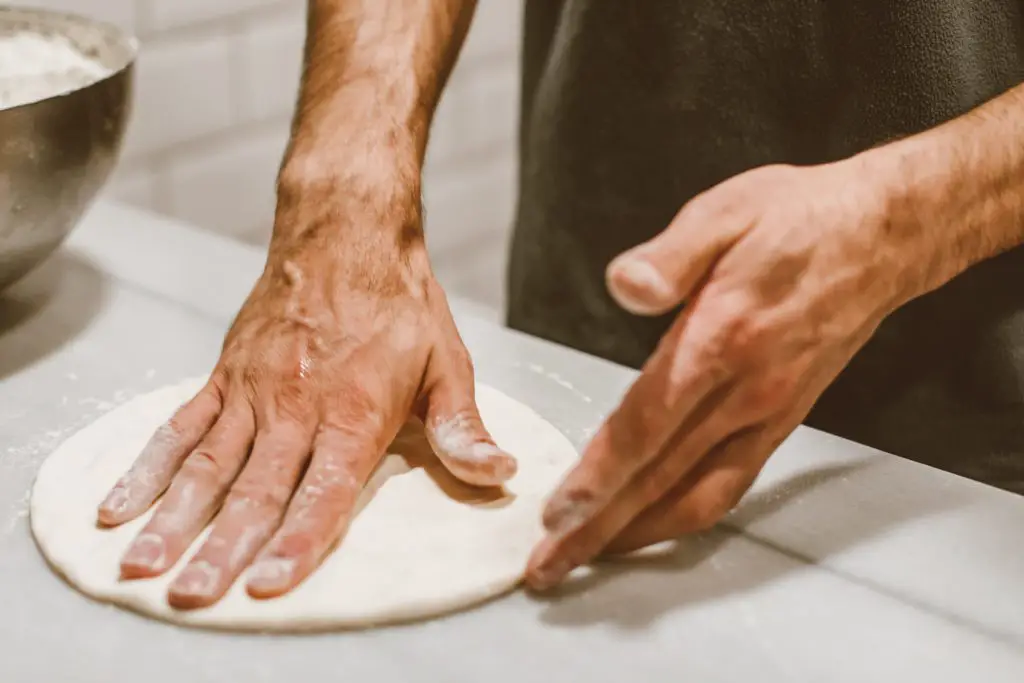How To Make A Gluten Free Pizza Roundup? Before moving on to the recipe, then are some tips for fluently and simply making gluten-free” homemade” pizza dough.

Gluten Free Pizza Roundup
- Eliminate All Form Of Gluten From Your Work Space
When developing a gluten-free recipe, it’s important to prepare your working environment well. Celiac disease and gluten allergies can be touched off by indeed the lowest amount of gluten. Have you lately prepared food with wheat flour in your kitchen? Before you start making your dough, it’s important to wipe down all cooking surfaces and your countertop fully. It’s also necessary to discard all the products containing gluten which are near. Cross impurity can be veritably dangerous for those who are gluten intolerant and you should avoid it at all costs.
- Do Not Eliminate Or Forget Ingredients
To make gluten-free pizza dough, it’s important to follow the recipe and the different preparation way precisely. Gluten-free flours are very different from traditional flours and every ingredient is important when it comes to creating the right flavor and texture. The gluten set up in utmost traditional homemade pizza doughs creates the texture of the dough and helps it rise duly. Since you will be working with gluten-free dough, numerous recipes will include important gluten substitutes similar as pea protein, rice flour, and indeed chickpeas to help mimic the same texture as traditional doughs. Make sure you have the right ingredientsbefore you start making your manual gluten-free pizza dough.
- Gluten Free Pizza Dough Are Made Of Mixtures Of Flour
In our gluten-free pizza dough form, a flour mixture of white rice flour, potato starch, cornstarch, and xanthan gum is used to mimic the texture and flavor of Italian pizza. It’s imperative to follow this mixture precisely to find a pizza with a crisp crust on the outside and soft on the inside.
- Let Your Dough Rest
Gluten-free pasta has a high starch content. Starchy ingredients take time to absorb humidity from wet ingredients. It’s thus important to let the mixture rest and rise before cuisine. Although every form is different, we recommend letting your dough rest for at least an hour. This sleeping period will insure that the starches are well doused and that, formerly in the oven, your dough will rise duly.
- Oil Your Cuisine Surface
Gluten-free doughs tend to be a bit stickier than traditional wheat flour pizza doughs. It’s thus necessary to grease the cuisine surfaces well( plate or mold), this will help the dough from sticking during unmolding. Using a silicone baking mat or a sheet of parchment paper is also a great way to help the dough from sticking( no greasing is also necessary).
- Prefer A Thin Crust Pizza?
Gluten-free doughs are more suitable for making thin pizzas similar as Neapolitan pizza. This pasta swells very little, if it’s too thick, it becomes heavy and delicate to digest.Still, if you prefer an American- style pizza with a thick crust, there are simple adaptations you can make to any gluten-free form. Like adding a tablespoon or two of xanthan gum per 300g of paste. It’ll also be more elastic and it’ll swell more fluently when cooked.
- Rigorous Kneading?
The gluten set up in utmost flours is what gives dough its texture and elasticity. Traditional pizza dough is sculptured multiple times to help develop gluten and produce the asked rise.
Again, gluten-free doughs shouldn’t be over-kneaded. Without gluten to develop, kneading a gluten-free dough is unnecessary. also, utmost gluten-free doughs are very sticky and delicate to work with.
- Significance Of Yeast
In all pizza recipes, yeast must be used in the dough. The yeast creates a gas which, when ignited, allows your dough to rise.
When there’s no gluten, the dough is frequently less flexible and structured. The amount of yeast needed must be increased compared to a conventional dough, and the” rising” time must be extended.
- Choose Your Condiment Wisely
Pizza condiments play an important part in the factual baking of the dough. When making pizza, it’s important to avoid piling up the sauce with lots of condiments. extra condiments affect the structure of your pizza dough and affect in an undercooked, soaked crust. Spread the tomato sauce in a thin subcaste and leave space between the pieces of stuffing. also add the cheese without excess. After baking, the dough will be firm and crisp rather than soft and watery.
Easy Gluten Free Pizza Dough Ingredients:
- 150g of rice flour
- 150g cornstarch( or a mixture of 75g cornstarch and 75g potato starch)
- 5g dry chef’s yeast
- 1 egg
- 15 cl of water
- 2 tbsp olive oil
- 2 tsp xanthan gum
- 1 tsp salt
Preparation
- In a bowl, sift the flours and xanthan gum.
- In a glass, pour warm water and yeast. Leave to stand for 5 minutes, also pour into the bowl.
- Add olive oil, egg and salt.
- Mix well to gain a smoothpaste.However, you can add a little rice flour, If the dough is too sticky.
- Let the dough rise for at least an hour at room temperature( 25 °C).
- Take the dough and form a ball.
- Flour the work face and roll out the dough with a rolling pin to a consistence of about 3 mm.
- Place the dough on a greased baking sheet and let rise again for at least 1 hour.
- Preheat the oven to 230 °C.
- Fill the dough and bake.
Conclusion
Limiting the consumption of ultra-processed food makes you healthier,happier and live longer.Stay gluten-free!
FAQs
- Should I limit myself to most widely known condiments?
Not at all,you can always tryout new things.
- Does wheat-free implies gluten-free?
No,wheat-free doesn’t implies gluten-free.

